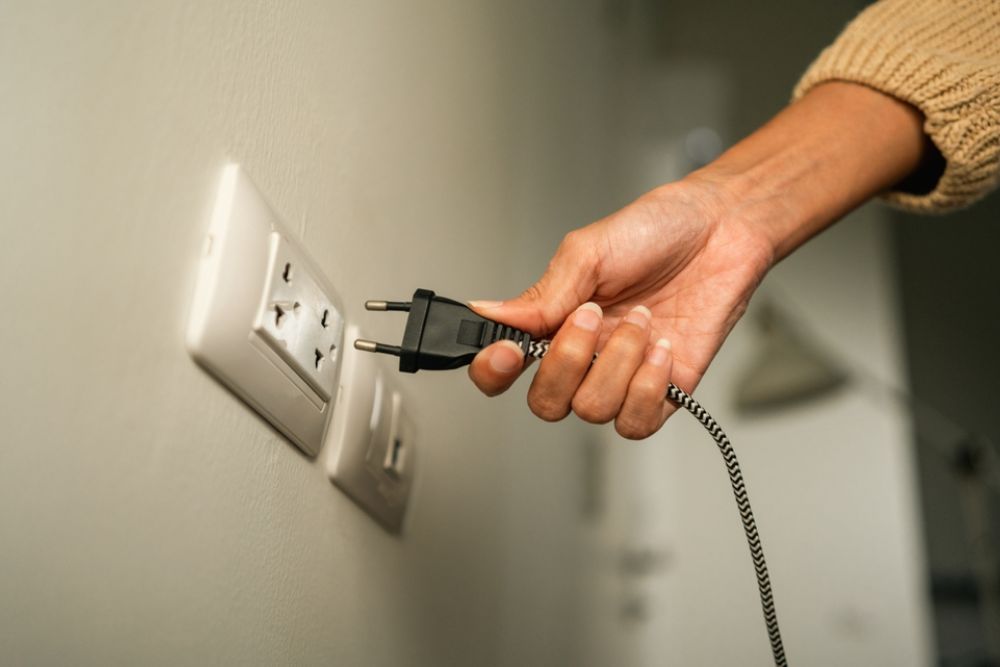Choosing the right credit card for large purchases can help you manage your expenses, earn rewards, and even save money on interest. With various cards offering different benefits, it’s essential to know what to look for in a card to maximize your savings and minimize costs. Here’s a guide to help you make an informed decision.
1. Look for Low-Interest or 0% APR Introductory Offers
If you’re planning a large purchase, choosing a card with a low-interest rate or a 0% APR introductory period can help you pay off the balance without accumulating high-interest charges. Many cards offer 0% APR for a limited time, typically between 12 and 21 months, allowing you to spread out payments.
Key Points on Low-Interest and 0% APR Cards:
- Extended Repayment Period: Cards with a 0% APR introductory offer allow you to pay off large purchases over several months without interest.
- Consider Balance Transfer Options: Some cards also offer balance transfer options, allowing you to consolidate other high-interest debt along with your new purchase.
- Check the APR After the Introductory Period: Once the introductory period ends, the APR will revert to the standard rate, so make sure it’s still reasonable if you can’t pay off the balance in full.
If you’re planning a significant expense like a home renovation or a major appliance, a 0% APR offer can make repayment manageable without the added cost of interest.
2. Consider Rewards Cards for Cash Back or Points
Rewards cards can help you earn cash back, points, or miles on your purchases, allowing you to get something in return for your spending. For large purchases, the rewards can add up quickly, especially with cards that offer high rewards rates or welcome bonuses.
Types of Rewards Cards to Consider:
- Cash Back Cards: Many cash back cards offer between 1% and 5% back on purchases. Look for cards with high cash back on general spending if you’re not sure which category your purchase falls into.
- Points or Miles Cards: Travel rewards cards often offer points or miles on all purchases. If you plan to travel, these cards can provide excellent value through redeemable travel points.
- Sign-Up Bonuses: Some rewards cards offer sign-up bonuses if you meet a certain spending threshold within the first few months. A large purchase may help you reach this requirement, providing a substantial bonus.
If you’re planning to buy furniture, electronics, or other high-ticket items, a rewards card can offer a return in the form of cash, points, or miles.
3. Review the Card’s Purchase Protection and Extended Warranty Benefits
Many credit cards offer purchase protection and extended warranty benefits, which can be valuable when making large purchases. Purchase protection typically covers damage, loss, or theft within a specific period after purchase, while extended warranty benefits can add an extra year to the manufacturer’s warranty.
Why Purchase Protection and Warranty Coverage Matter:
- Purchase Protection: If something goes wrong with your purchase, purchase protection can reimburse you, which is especially valuable for high-cost items like electronics.
- Extended Warranty: Some cards add an extra year or more to the manufacturer’s warranty, giving you peace of mind if something goes wrong after the standard warranty ends.
- Return Protection: Certain cards offer return protection, allowing you to return items beyond the store’s return policy if you’re unsatisfied with the product.
These benefits can help safeguard your investment, especially if you’re purchasing items that are prone to wear, such as electronics or appliances.
4. Check for High Credit Limits or Flexible Spending Limits
A high credit limit is essential for large purchases, as it ensures you won’t max out your card and risk damaging your credit score. Some cards, particularly those aimed at high-spending consumers, offer flexible credit limits that adjust based on your spending habits and creditworthiness.
Considerations for Credit Limits:
- Look for High Credit Limits: Cards with higher limits allow you to make large purchases without impacting your credit utilization ratio, which is an important factor in maintaining a healthy credit score.
- Flexible Spending Limits: Some premium credit cards offer flexible limits, which may increase based on your income, credit score, and spending behavior.
- Requesting a Limit Increase: If you already have a credit card with good terms, you can request a credit limit increase before making a large purchase to ensure you have sufficient available credit.
If you’re purchasing an item that costs thousands of dollars, a high credit limit will allow you to make the purchase without affecting your credit utilization.
5. Compare Annual Fees vs. Benefits
Many rewards and premium cards come with annual fees, which can range from $95 to $500 or more. When choosing a card for a large purchase, weigh the value of the benefits against the cost of the annual fee to determine if it’s worth it.
Factors to Consider Regarding Annual Fees:
- Weigh the Value of Rewards and Benefits: Some cards with annual fees offer higher rewards rates, valuable perks, and travel benefits that can easily outweigh the cost of the fee.
- Consider Fee-Free Options: If you prefer to avoid annual fees, there are many cash back and rewards cards with no annual fee that still provide decent rewards and benefits.
- Look for Statement Credits: Some cards offer annual travel credits or other statement credits that can offset the cost of the fee, making it more cost-effective.
When used strategically, cards with annual fees can provide exceptional value, especially if you’re making a large purchase that allows you to take advantage of these benefits.

6. Assess Foreign Transaction Fees for International Purchases
If you’re purchasing from an international retailer or traveling abroad, check whether your card charges foreign transaction fees. These fees can add 1% to 3% to your purchase cost, which adds up for large expenses. Many travel-focused cards waive these fees, making them more suitable for international spending.
Why Avoid Foreign Transaction Fees:
- Reduces Additional Costs: Foreign transaction fees add an extra cost to each purchase, which can add up significantly on larger expenses.
- Ideal for International Shopping or Travel: If you’re making a large purchase overseas or buying from international retailers, using a card without foreign transaction fees can help you save.
Avoiding foreign transaction fees allows you to save on international purchases, making travel-focused cards a better choice for large purchases made outside your home country.
7. Look for Cards with Introductory Bonus Points or Cash Back
If you’re planning to make a large purchase, consider cards that offer welcome bonuses for spending a certain amount within the first few months. A single large purchase can often help you meet this requirement, giving you a substantial reward in the form of points, miles, or cash back.
How Introductory Bonuses Work:
- Meet Spending Requirements Quickly: For cards with high-value bonuses, a large purchase can help you meet the spending requirement, allowing you to earn extra rewards.
- Significant Rewards Value: Some bonuses are worth hundreds of dollars, providing a significant return for a single purchase.
- Combine with Ongoing Rewards: In addition to the bonus, you’ll still earn ongoing rewards on the purchase itself, making it even more valuable.
Sign-up bonuses offer an excellent way to maximize the value of a large purchase, especially if you’re getting cash back or points you can use toward travel, future purchases, or statement credits.
8. Check for Flexible Payment Options and Financing Plans
Certain credit cards offer flexible payment options, such as payment plans or the ability to pay in installments, which can make it easier to manage large expenses without accruing high interest. Some cards let you split large purchases into monthly payments at a fixed rate, allowing you to pay off the balance over time.
Benefits of Flexible Payment Plans:
- Manageable Monthly Payments: Some cards allow you to divide a large purchase into fixed monthly payments with low or no interest, which can be easier to budget for.
- Predictable Interest Rates: With fixed-payment plans, you know exactly how much you’ll pay each month, which is helpful for managing cash flow.
- Avoids Credit Card Interest: These financing plans often have lower rates than regular credit card interest, helping you save on large purchases.
Flexible payment options are useful for managing large expenses without overwhelming your budget or accumulating high-interest debt.
9. Review Card Benefits for Travel and Purchase Insurance
Some premium cards offer insurance benefits that can be valuable when making large purchases. These include travel insurance, purchase protection, price protection, and even extended warranties that go beyond what the retailer provides.
Types of Insurance Benefits to Look For:
- Purchase Protection: Covers your purchase if it’s damaged or stolen within a specific period after purchase.
- Price Protection: Some cards offer price protection, which reimburses you if the price drops within a certain time frame.
- Travel Insurance: If your large purchase is travel-related, travel insurance can protect you from losses due to trip cancellations, delays, or baggage issues.
These insurance benefits provide an added layer of security, especially when making high-cost purchases like electronics, furniture, or travel packages.
10. Choose a Card That Fits Your Spending Habits
Ultimately, the best card for a large purchase is one that aligns with your spending habits and financial goals. If you prefer to pay off your balance monthly, a rewards card with cash back or points may be ideal. For those who need to pay over time, a low-interest or 0% APR card may be more suitable.
Considerations for Choosing the Right Card:
- Evaluate Your Financial Goals: Whether you’re looking to earn rewards, save on interest, or enjoy additional protections, choose a card that aligns with your primary goals.
- Analyze Spending Categories: If your large purchase falls within a specific rewards category, choose a card that offers higher rewards for that type of spending.
- Match Card Benefits to Purchase Type: For example, a travel rewards card may be ideal for a vacation purchase, while a low-interest card might be best for a home renovation.
By matching your spending habits and goals to the card benefits, you can maximize the advantages of using a credit card for your large purchase, ensuring that it works to your financial benefit.





